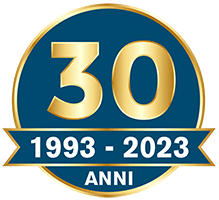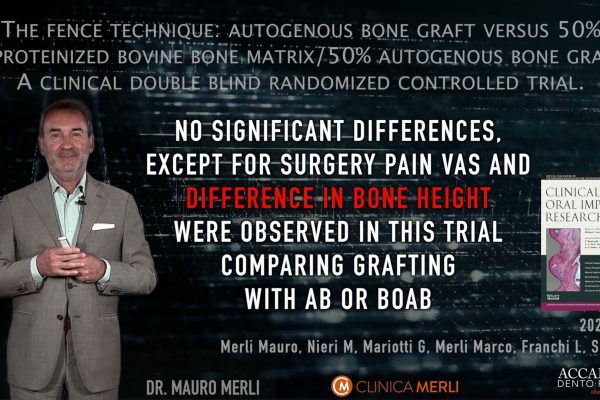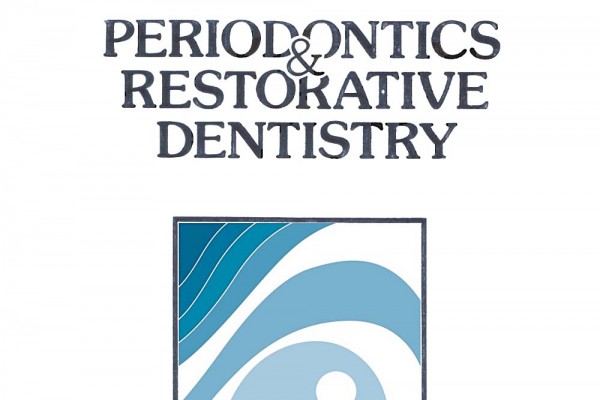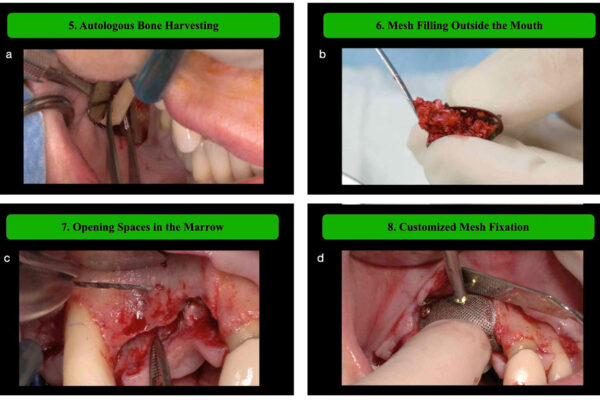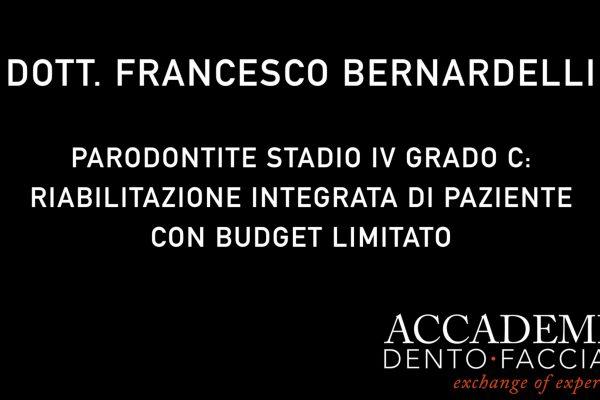The fence technique: Autogenous bone graft versus 50% deproteinized bovine bone matrix / 50% autogenous bone graft—A clinical double-blind randomized controlled trial
Mauro Merli, Michele Nieri, Giorgia Mariotti, Lorenzo Franchi, Bernardo Quiroga Souki
Objectives: The aim of this short-term double-blind, parallel, randomized clinical trial was to compare bone augmentation grafting with 100% autogenous bone (AB) or 50% deproteinized bovine bone matrix (DBBM)/ 50% autogenous bone (BOAB) using a guided bone regeneration procedure, the fence technique, in a two-stage implant placement.
Material and methods: Partially edentulous patients with extensive three-dimen- sional osseous defects were included in this study. The main outcome measure was the differences in bone volume from pre-surgery (T1) to 6 months post-surgery (T2). Bone height, chair-time, pain, functional limitation, and complications were also assessed.
Results: Fifteen patients were allocated to the AB group and 15 patients to the BOAB group. The difference in bone volume from T1 to T2 was 648 mm3 for the AB group and 869mm3 for the BOAB group (difference between groups 221 mm3, 95% CI from −363 to 804, p = .442). The surgery pain VAS was 1.6 for the AB group and 2.3 for the BOAB group (difference between groups 0.8, 95% CI from 0.0 to 1.5, p = .045 favoring the AB group). The height difference in bone from T1 to T2 was 2.2 mm for the AB group and 3.7 mm for the BOAB group (difference between groups 1.5mm, 95% CI from 0.1 to 2.9, p = .038 favoring the BOAB group). For complications, chair- time, post-surgery pain, and functional limitation, there were no differences between AB and BOAB.
Conclusions: No significant differences, except for surgery pain VAS and difference in bone height, were observed in this trial comparing grafting with AB or BOAB.
Clin Oral Impl Res. 2020;00:1–9.

